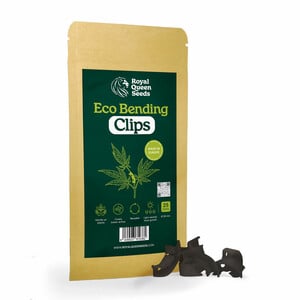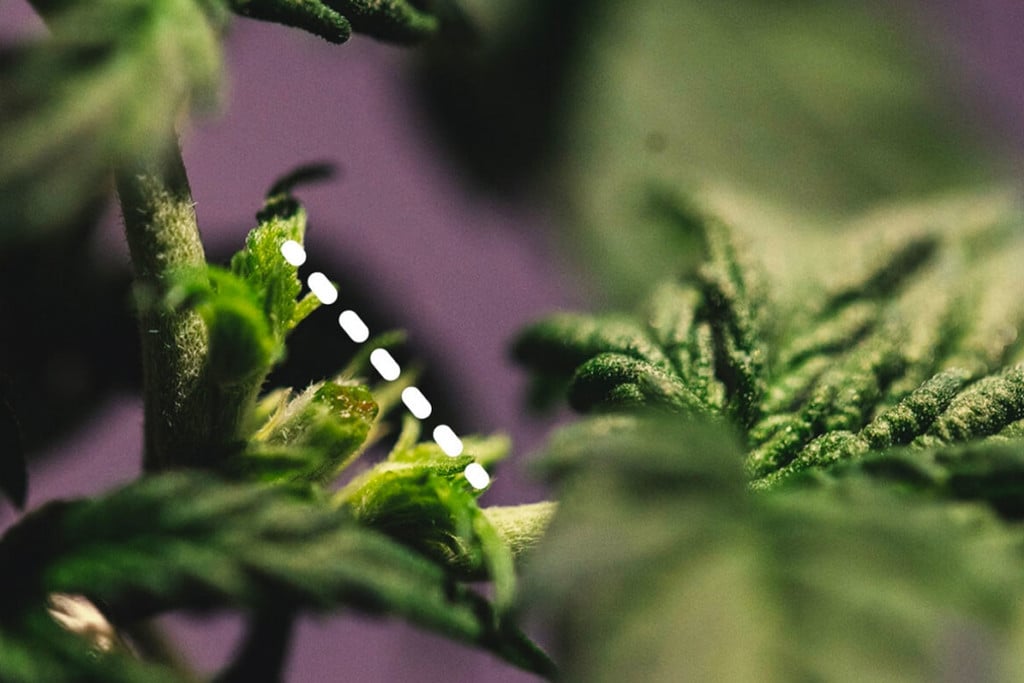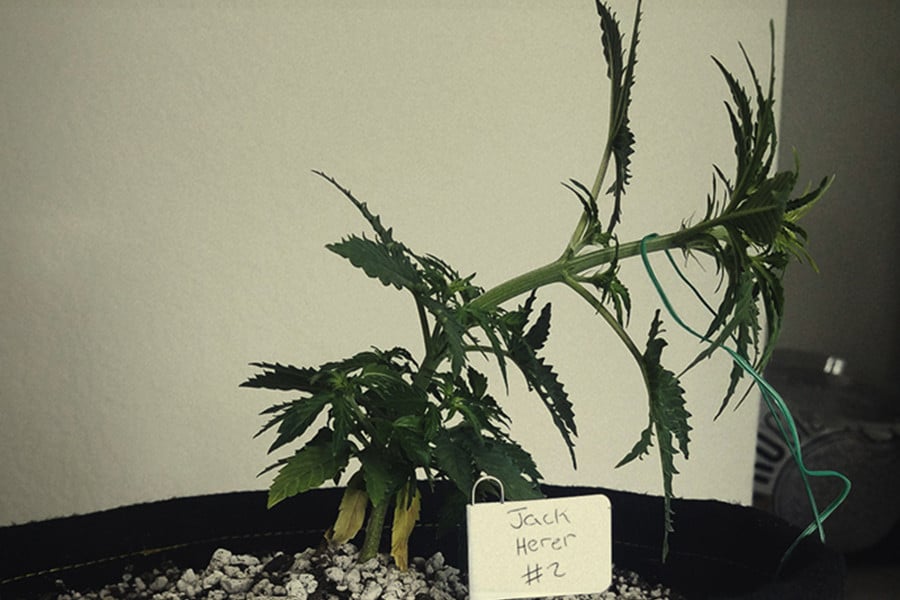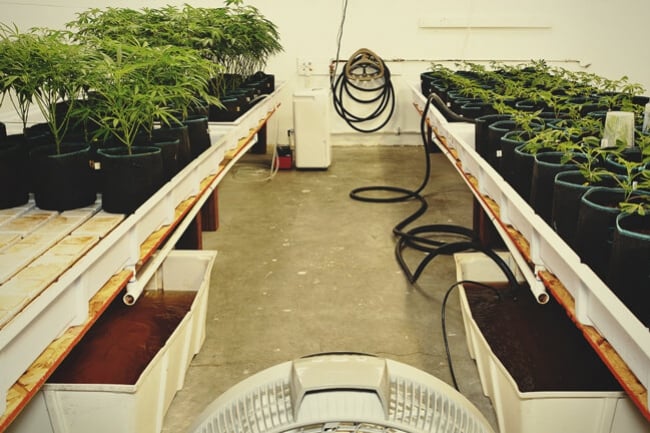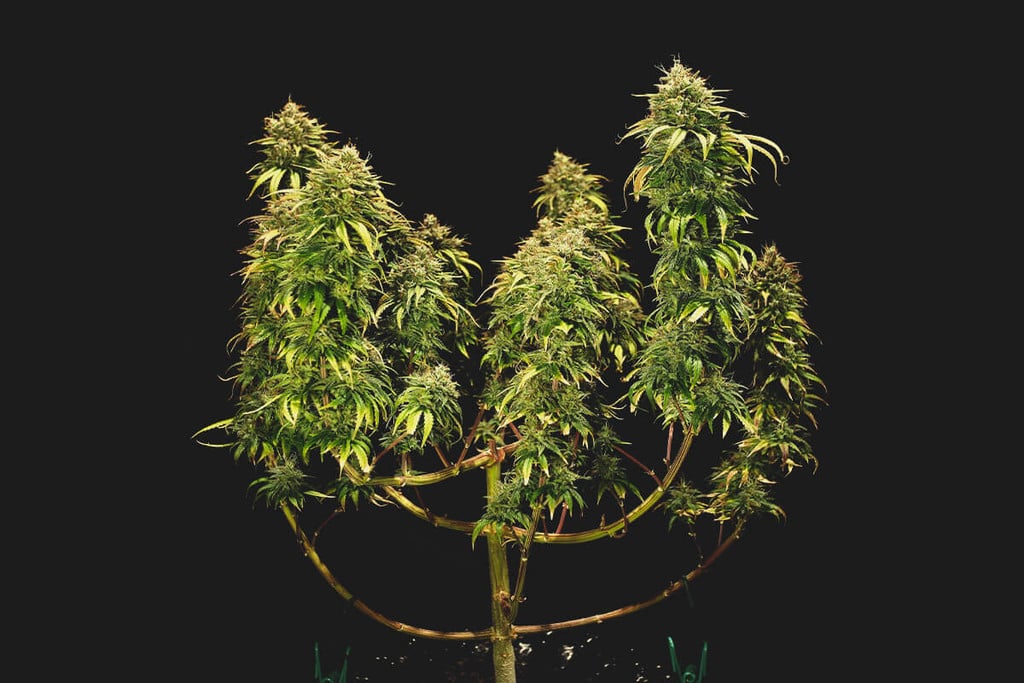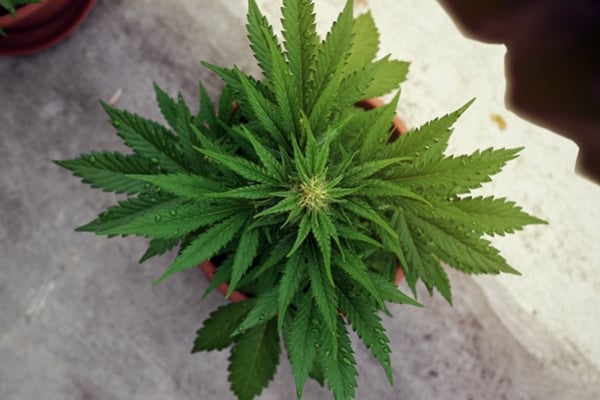.

How To Mainline Cannabis Plants: Step-By-Step Guide
If you've heard of mainlining before, but have no idea how it works, or how it benefits your cannabis plants, then keep reading. We've covered everything you need to know about this bud-boosting growing technique.
Everything you need to know about mainlining cannabis
Whether you're new to growing cannabis, or an old hand trying to learn new tricks, mainlining is an essential technique you need to know about. Mainlining cannabis plants not only boosts yields, but allows you to carefully shape plants—perfect for when space is tight.
And the best part? Once you know how to create a manifold, mainlining is incredibly straightforward, making it ideal no matter your experience growing cannabis.
Contents:
Manifold and Mainlining: What Do They Mean?
Let's start at the beginning and break down exactly what we mean when we're talking about mainlining and manifolds. In practical terms, the technique is a hybrid of LST, topping and a ScrOG net.
Mainlining refers to a training technique growers use to encourage the development of several large, uniform colas—not just one.
The manifold is how we achieve this, by splitting the cannabis stem and creating a Y-shaped hub. Doing so diverts nutrients and resources to several branches.
The technique is not only straightforward, but requires little extra effort. As long as you know how and when to mainline cannabis plants, you can do it in minutes. And, once you've created your central manifold, you can replicate the process on newer growths, essentially doubling the number of colas every time. Why have one central cola when you could have 4, 8, 12, 16 or even 32?!
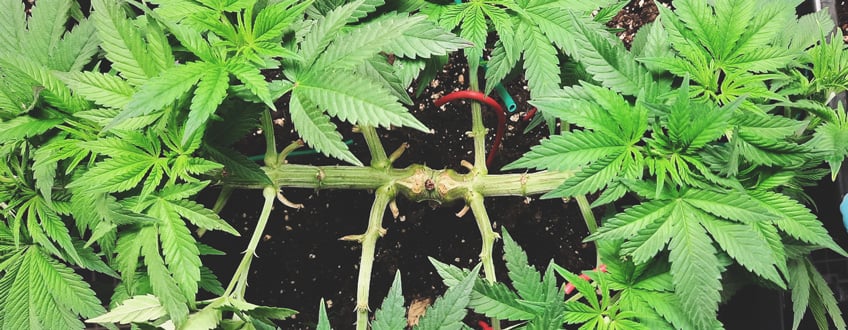
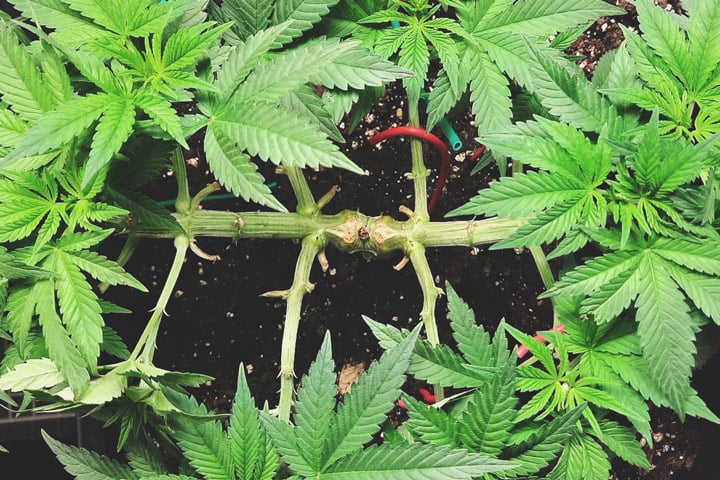
Are There Benefits to Mainlining Cannabis?
The most significant advantage of mainlining cannabis, of course, is the potential increase in yields. Rather than several smaller popcorn buds draining energy away from the central cola, we have dozens of branches loaded with dense, uniform colas.
Other benefits to mainlining include:
- Increased canopy size
- Easy to implement
- Gives greater control over stretching
- Adoptable indoors and outdoors
- Grow several cannabis plants, even if space is limited
- Only needs to be done once
Because mainlining takes place in the early stages of cannabis growing, it only needs to be done once or twice before you start seeing the benefits. Get your plants under control from the get-go, and all you'll need to do is sit back and wait till harvest.
Free Advanced
Growing Guide!
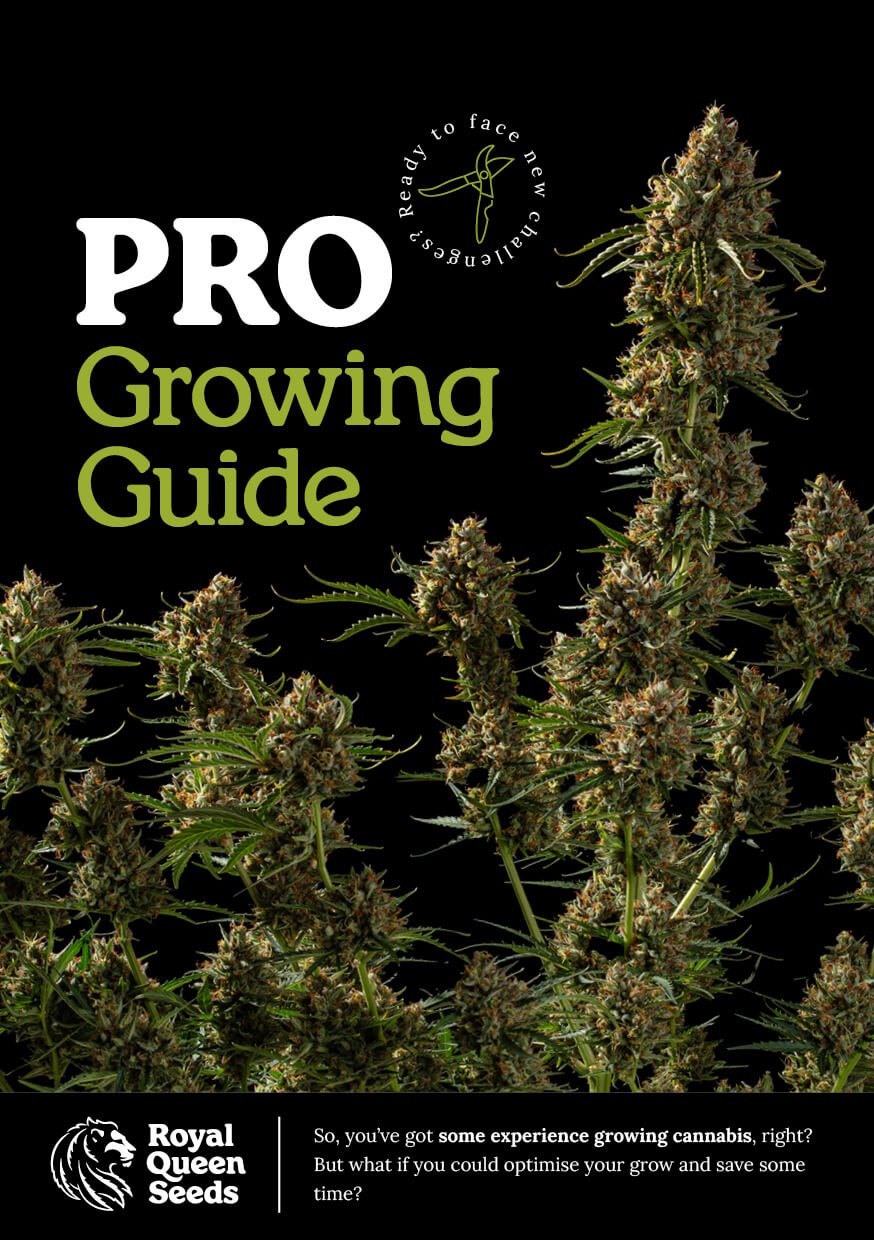
How to Mainline Cannabis Plants
If you're sold on the idea of mainlining, then it's time to jump straight into our step-by-step guide. You won't need much equipment, but you should make sure plants are healthy and robust beforehand.
1. Equipment
This is one of the more minimal processes you’ll carry out when growing cannabis. Really, all you need are some pruning shears and plant/cable ties!
2. Creating a manifold
Tha manifold is the central structure of the mainlining process. We'll go through the process of creating a manifold, then explain how you can utilise it several times throughout the vegetative phase.
Step 1
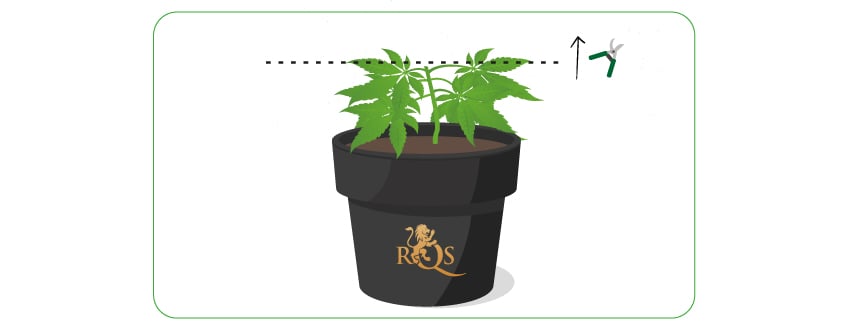
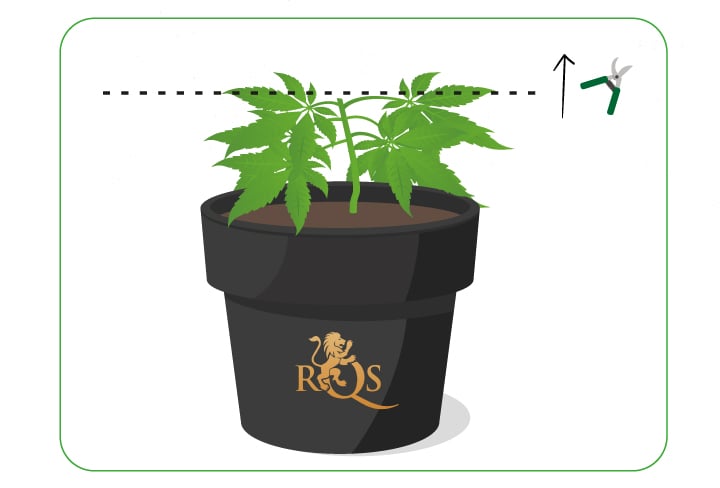
Wait until your seedlings have developed between 5 and 8 nodes. It's essential not to top seedlings too early—otherwise, they may not recover. Then, cut the entire plant down to the 3rd node (3rd pair of leaves from the base).
Step 2
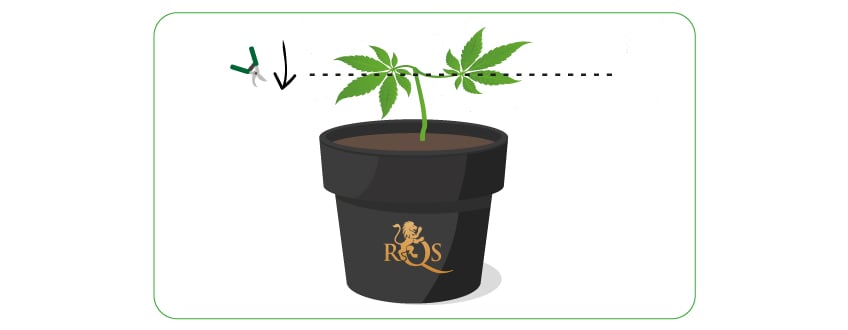
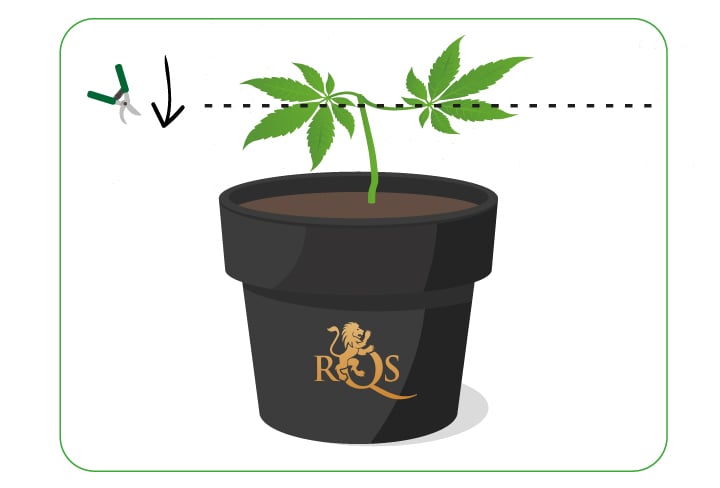
Remove all additional growths and vegetation below the 3rd node. Your plant should have a central stem with two large fan leaves branching from the very top (Y-shape).
Step 3
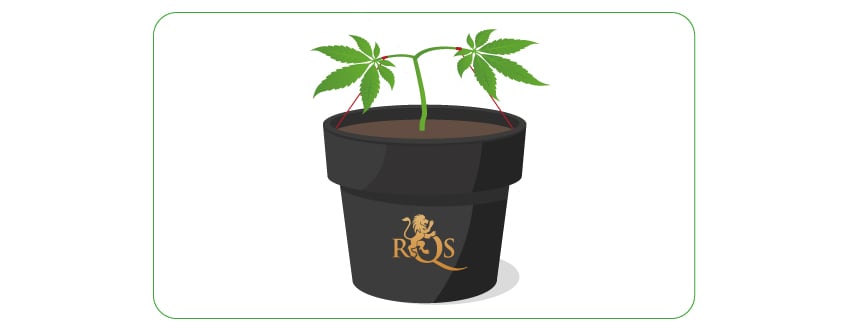
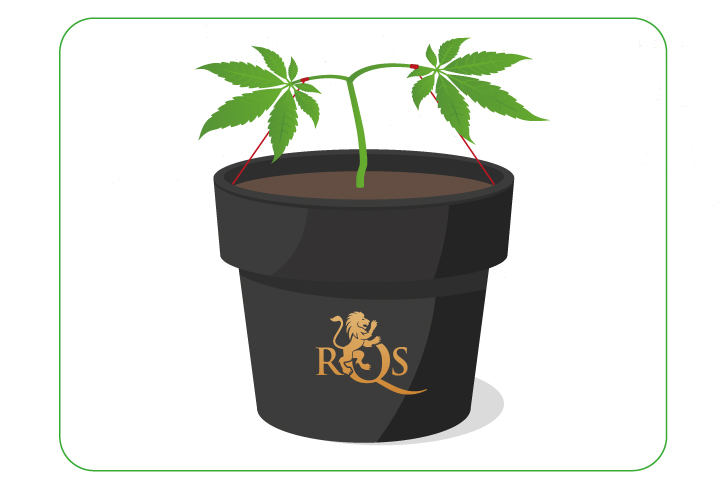
With your two main shoots prepared, it's time to tie them down—gently! Young cannabis plants are fragile, and it's easy to snap new growths. The aim is to train shoots horizontally, parallel to the ground.
Secure the other end of your plant ties or cable ties to the edge of your container to keep shoots on the straight and narrow.
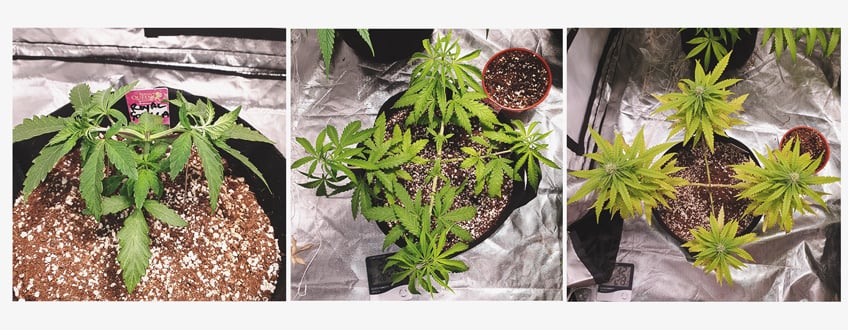
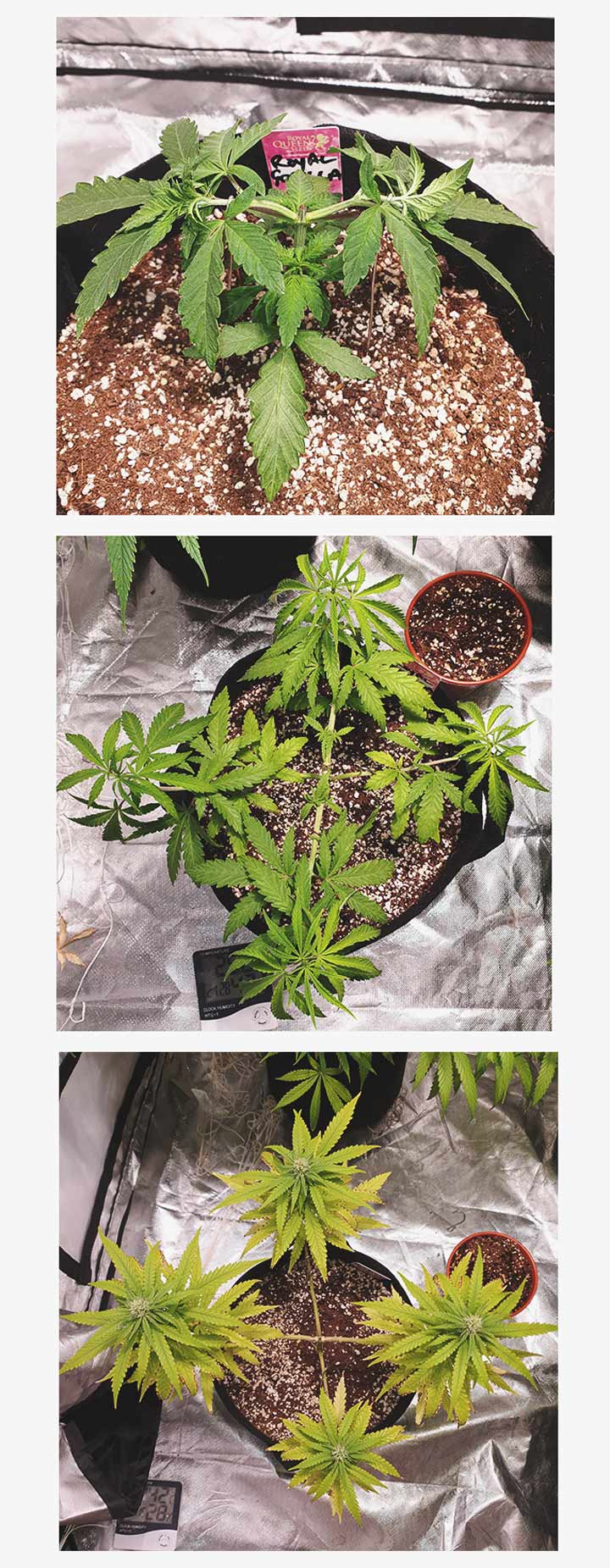
3. Mainlining
If performed correctly, cannabis plants should start to recover almost immediately. And, with the central manifold created, the roots will now split nutrients and other essential resources between the two shoots at the third node. If you want to maximise yields, we recommend creating at least eight colas.
With your knowledge on manifolds established, it’s time to learn how to go about mainlining.
Step 1
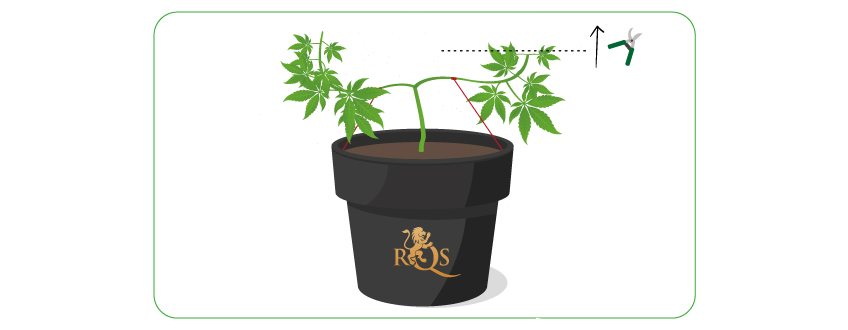
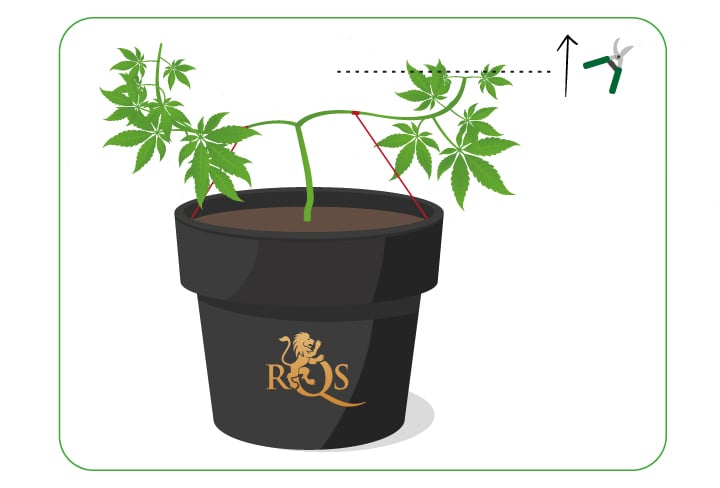
Wait until each branch of your manifold has grown four new pairs of leaves. Then, similar to before, top either side down to the 3rd node.
Step 2
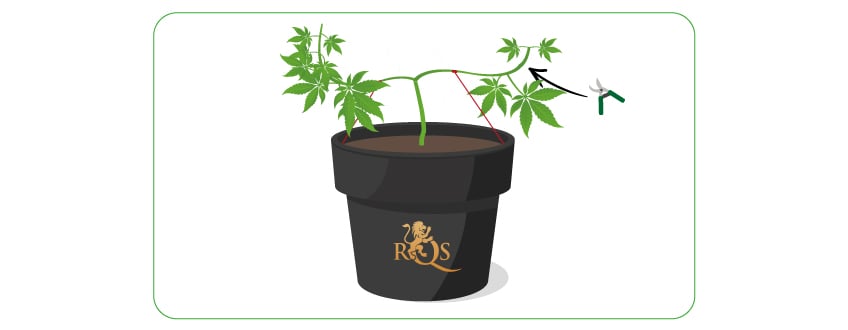
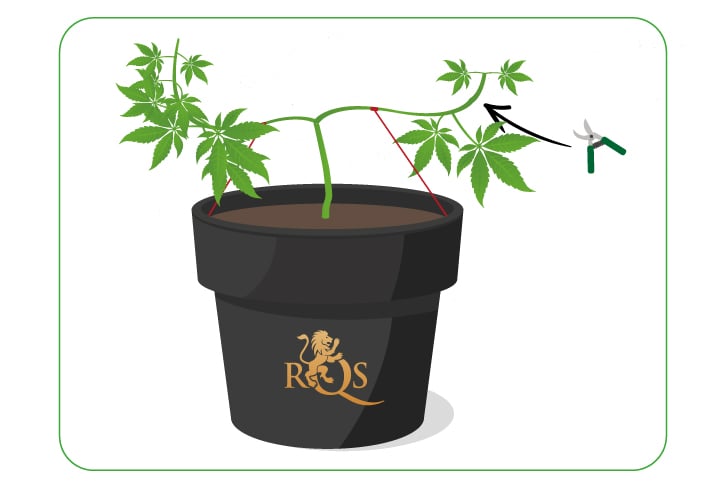
This time, however, you aren't going to remove all of the growth below the third node. Instead, only remove the second node, leaving node one and three intact.
Step 3
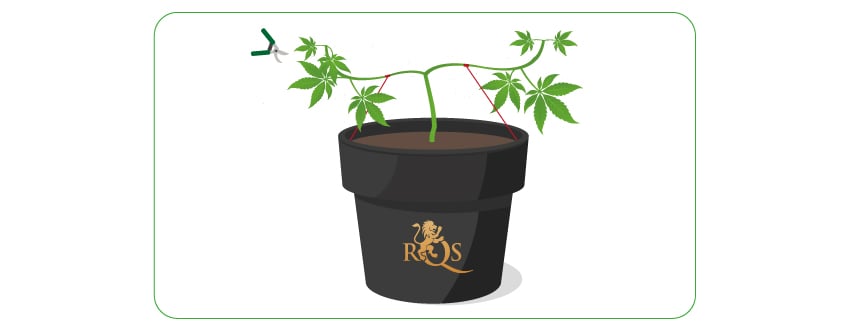
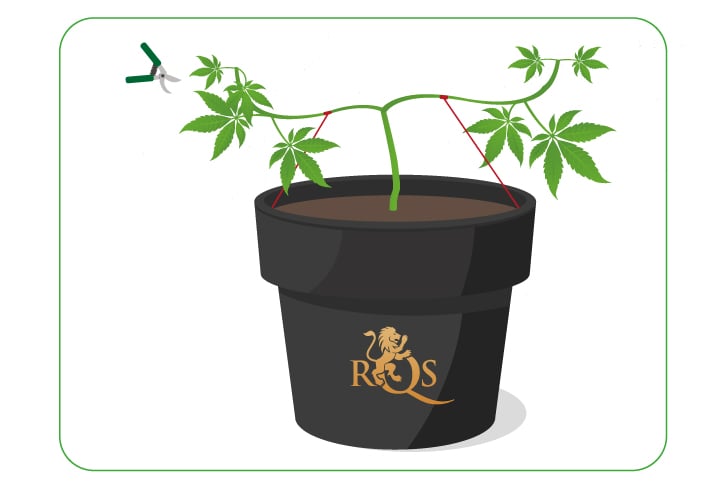
Repeat the process on the other side, and you should have eight shoots in total (two pairs of leaves on both of the main branches).
Step 4
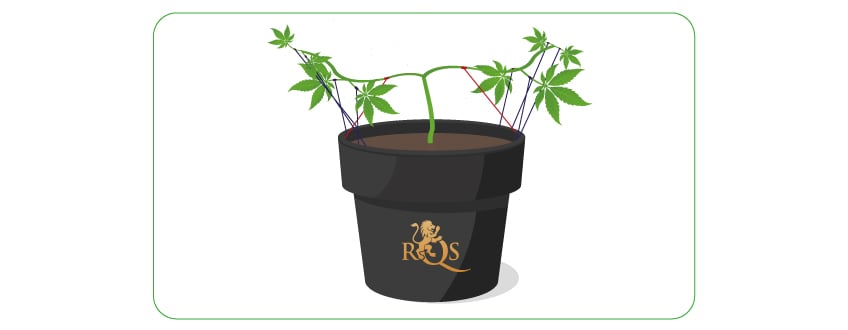
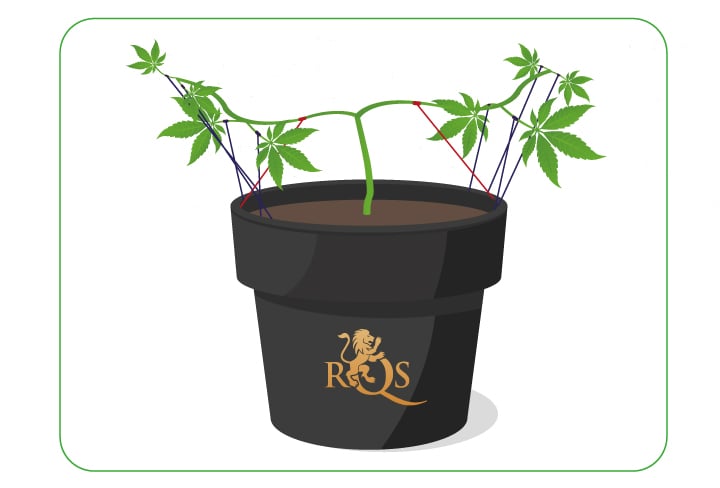
Uniformity is key to keeping plants under control, so ensure you adjust the ties to keep both central branches tied down, and the base of the newly created shoots parallel with the ground.
You want your newer stems to grow to the same height, so check back twice a week and adjust accordingly.
Step 5
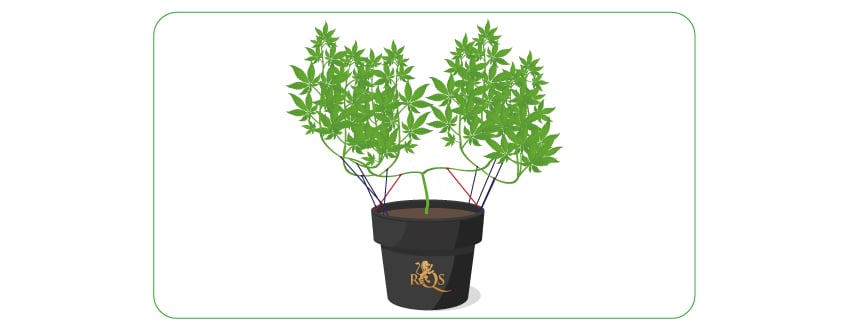
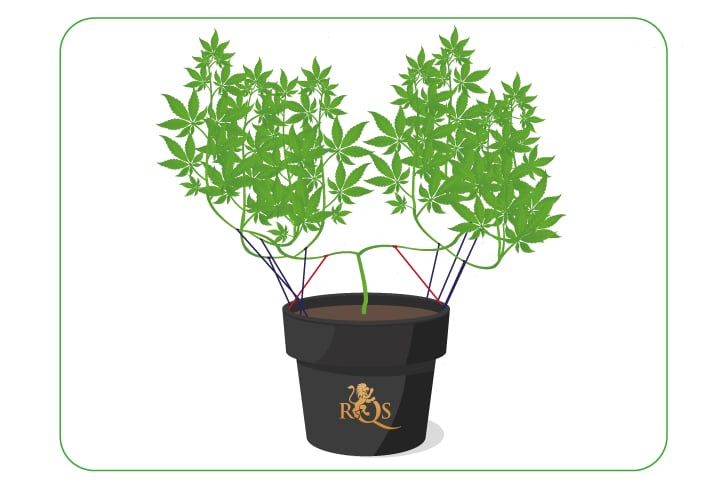
With your plant topped and tied down, it's merely a case of fulfilling their needs with water, nutrients and light while waiting for them to grow. Once you're happy with the height (will vary based on your tent, grow op etc.), flip them to flowering by changing the light schedule to 12/12.
Step 6
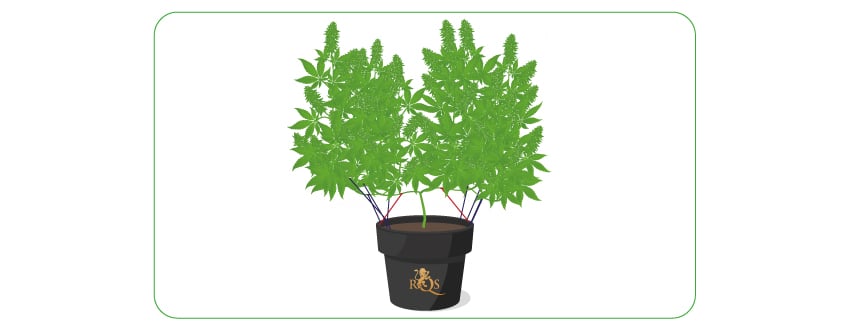
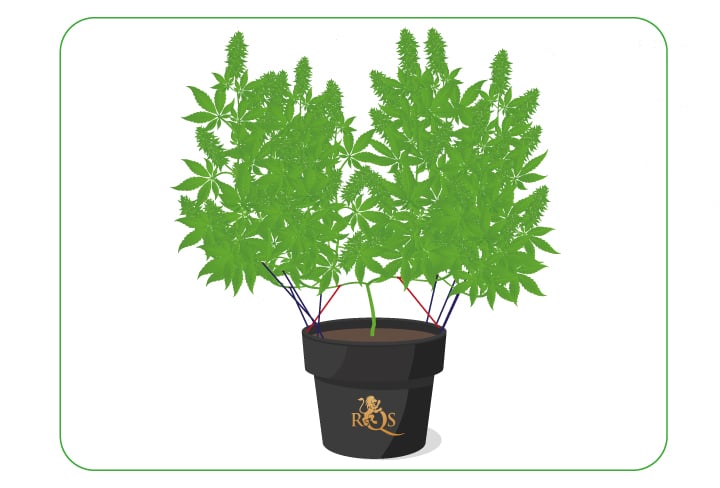
If you've followed all the steps outlined above, well done! You've successfully mainlined your plants, and in a few weeks, you should have eight dense colas to harvest and enjoy. During flowering, you can continue to prune and manage plants as you normally would.
Cannabis Mainlining Hints and Tips
✂️ Trim fan leaves right before flowering: Although this is more of a general tip, it's just as crucial with mainlining to trim excess fan leaves, either just before flowering or within the first two weeks of the flowering phase. Doing so ensures each of your newly created colas receives maximum exposure.
✔️ Don't start mainlining unless plants are healthy: Mainlining is incredibly straightforward, but we cannot stress how important it is you only start topping and training plants if they are healthy.
🕘 Check plants twice a week to maintain their shape: During the vegetative stage you'd be surprised how quickly plants will grow and stretch. Mainlining relies on a principle of symmetry, so you should check plants twice a week and adjust ties accordingly.
🌱 Seeds are more receptive to mainlining than clones: Cannabis seeds will naturally develop symmetrical nodes, which makes creating a uniform manifold significantly easier. You'll have to use your own judgment when mainlining clones.
🎀 Don't tie down branches too tightly: You must find a balance between maintaining the symmetry of mainlining and letting branches develop naturally. Gentle plant ties are preferable to cable ties, as the latter can damage young branches and shoots.
💧 Mainlining works with hydroponic setups: Yes, you can mainline cannabis plants grown with hydroponics. You'll need to be careful how you tie them down though as the plant won't be anchored directly in soil, but otherwise, it's just as effective!
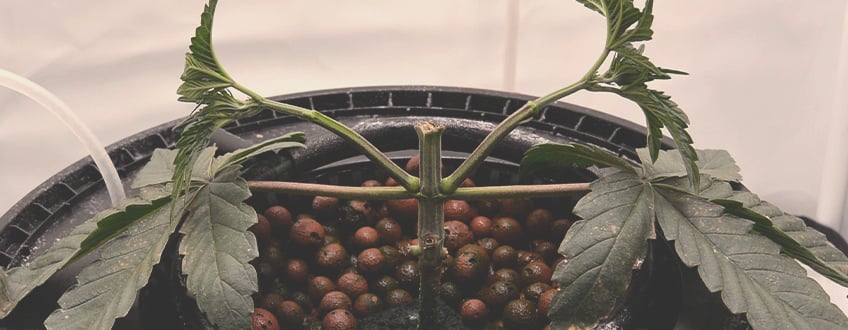
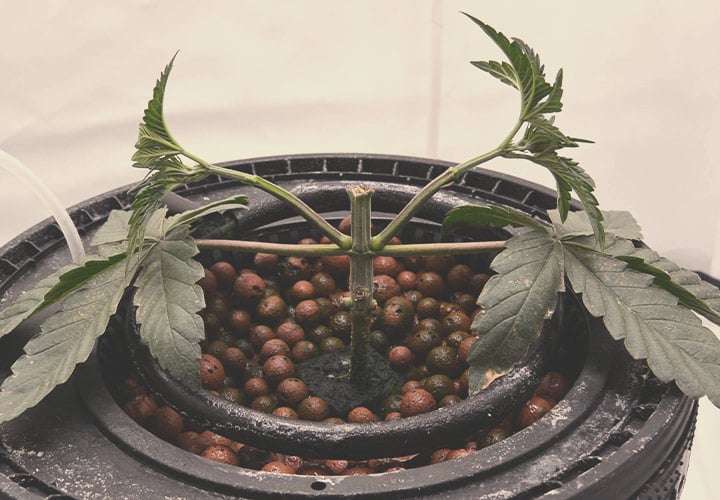
Do You Need a Net to Mainline Cannabis Plants?
Unlike ScroG, mainlining doesn't use a net. By topping plants early, and creating a manifold, each branch will be significantly tougher than usual. If you've ever looked at the stem of an untrained cannabis plant, you'll notice how much thicker it is than any other branch. With mainlining, you're forcing the plant to duplicate that same thickness and toughness across multiple stems, not just one.
The point of a net in ScroG is to support existing branches, and help even out light distribution. However, by training plants to develop several colas, and encouraging stronger branches, your cannabis plants will do an excellent job of supporting themselves, without a net.
The only time you may need to brace mainlined plants is during flowering. With supersized colas, even tougher branches have a hard time bearing their weight.
Mainlining vs Super Cropping vs LST
It's common for growers to adopt multiple techniques when growing cannabis. However, mainlining is more of an "all-in" approach. By that we mean you'll be topping and manipulating your plants stem structure in such a way that you shouldn't need to use additional training or topping techniques.
Super cropping
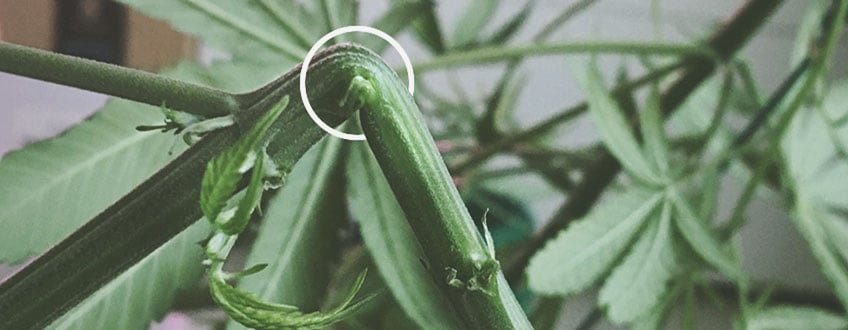
Super cropping is a way of shaping plants that you haven't mainlined, and while it's a favourite among many growers, it's also very labour intensive. Compared to super cropping, mainlining is simple, can be done in minutes, and needs very little intervention from the grower once you've established the manifolds.
LST
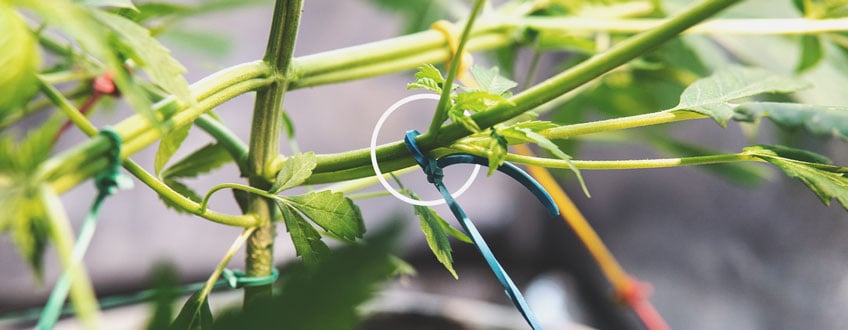
Mainlining already adopts the principles of LST, so it's not about choosing one over the other. If space in your grow tent is tight, then stick to mainlining. If you have room to play with, practise LST and see what the results are. LST doesn't involve as much aggressive topping, making it popular among beginner or unconfident growers.
Should You Try Mainlining?
Mainlining is a simple, inexpensive, and non-labour-intensive technique that can improve yields. When you weigh up the benefits against the cons (there aren't really any), it's hard to think of reasons not to mainline cannabis plants.
There are, however, a few exceptions. Autoflowers, for example, shouldn't be mainlined. Autoflowering cannabis strains grow faster than any other, so any stress caused by topping will only impact the final yields. Mainlining, generally, is also better suited to medium or tall sized strains, as you will struggle to see the benefits on dwarf varieties.
Overall, mainlining is a near-perfect training technique that, in the majority of situations, is going to help your cannabis plants reach their full potential. And, if nothing else, the sight of eight engorged colas never gets old.


























